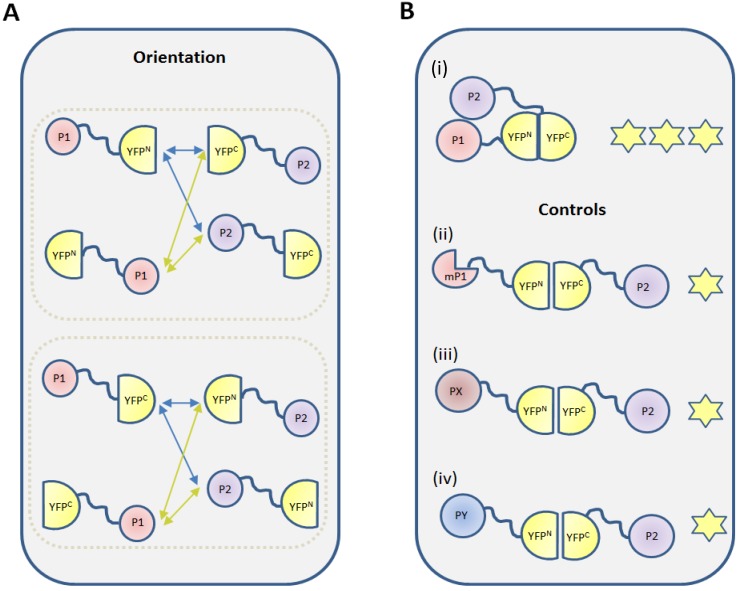Figure 4.
Two key elements of a BiFC experiment: fusion orientation and controls. (A) Each of the two YFP halves (YFPN and YFPC) can be fused at either its N- or C-terminus, with the protein of interest. Likewise, the protein of interest can also be fused to the YFP half via its N- or C-terminus. This creates four possible YFP-protein combinations for each protein of interest and eight combinations that should be tested for each interaction pair; (B) In addition to the protein-protein interaction to be tested, (i) appropriate negative controls should be incorporated in a BiFC experiment; These negative controls include substitution for one of the protein of interest by (ii) a mutated protein (mP1); (iii) a related protein (PX) that does not interact; and (iv) an unrelated protein (PY) with the same subcellular localization. The stars indicate YFP fluorescence due to self-assembly (one star) and expression due to a bona fide interaction between the test proteins (three stars).

